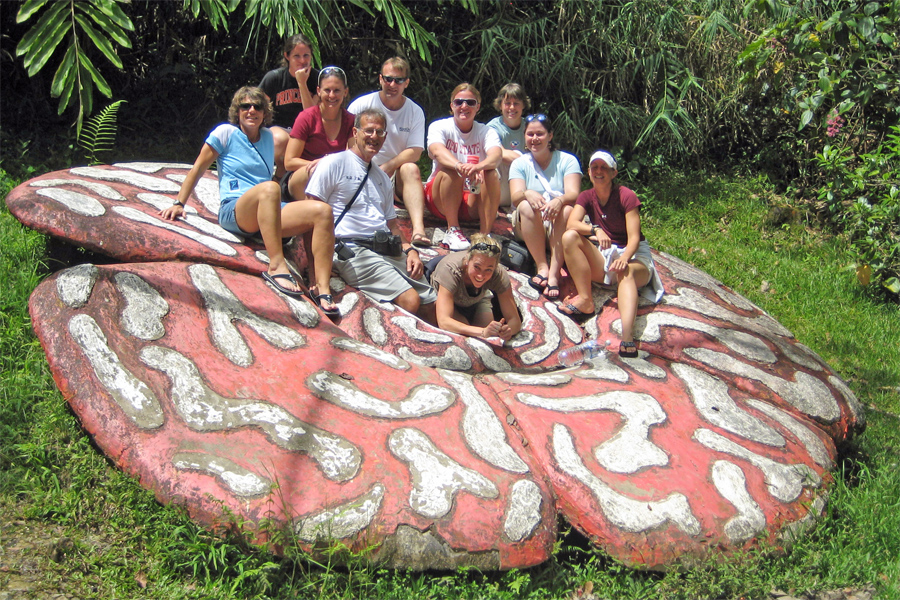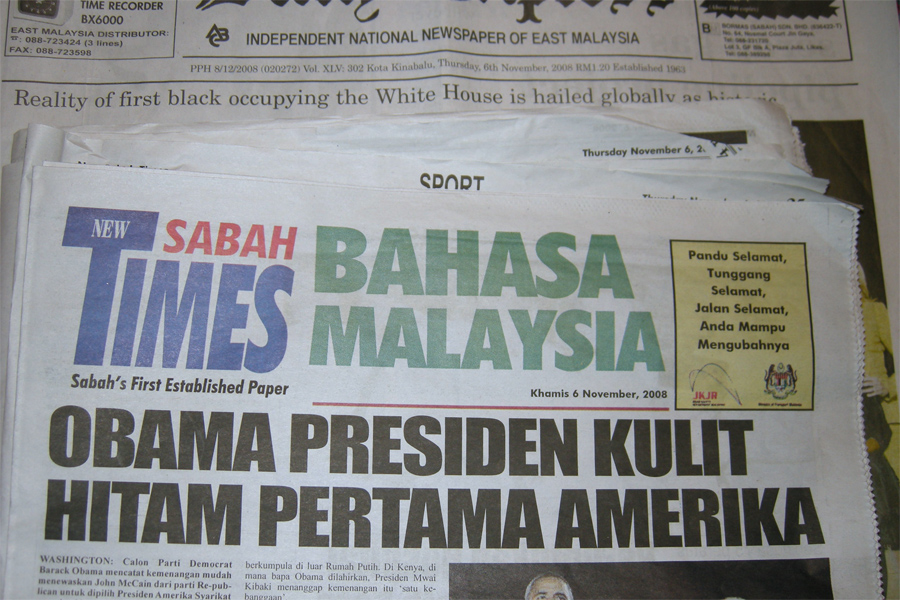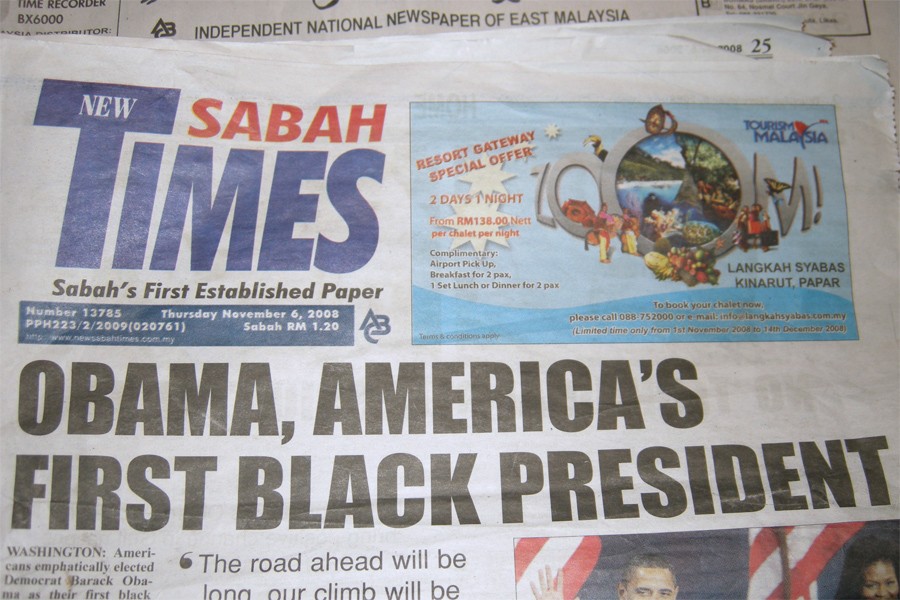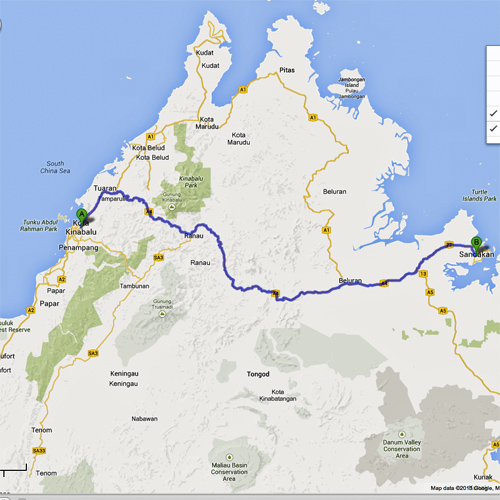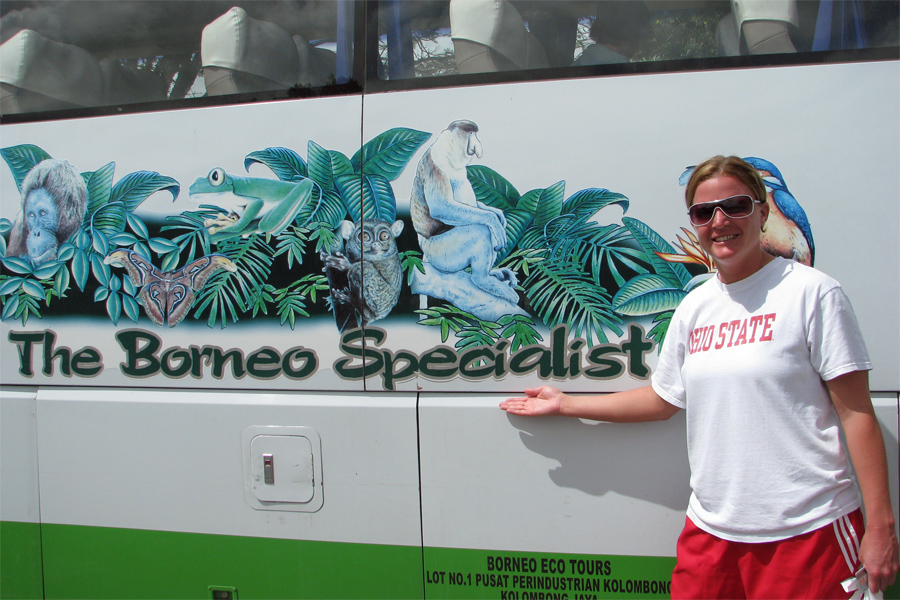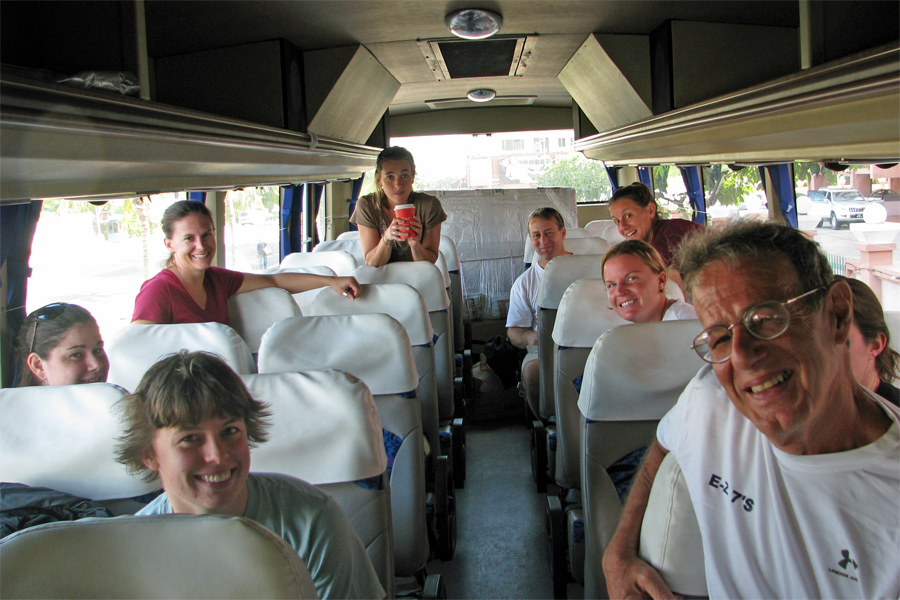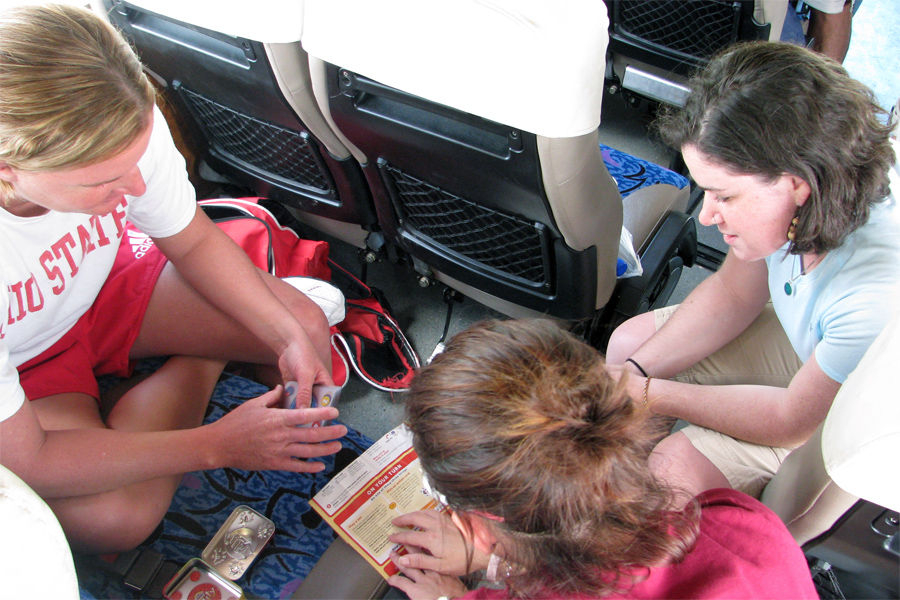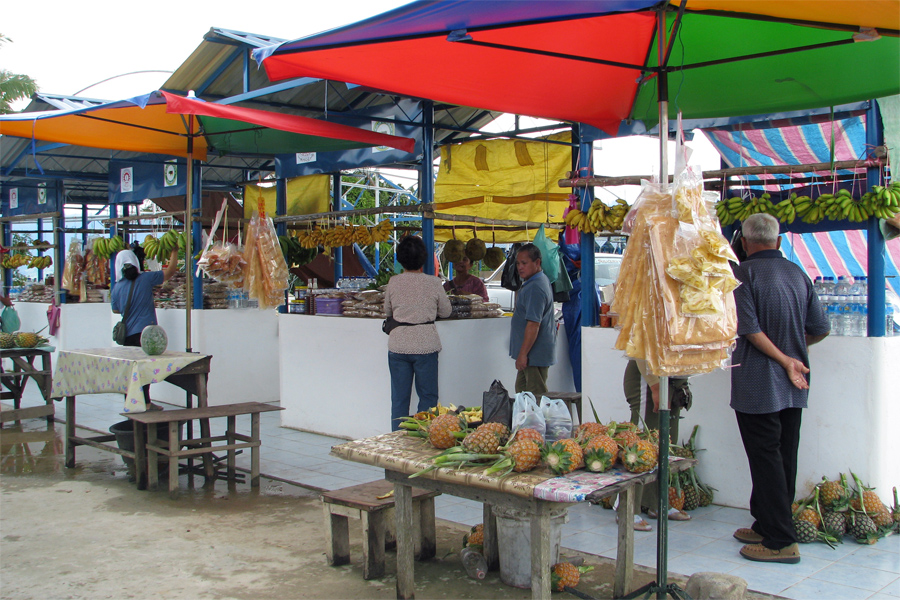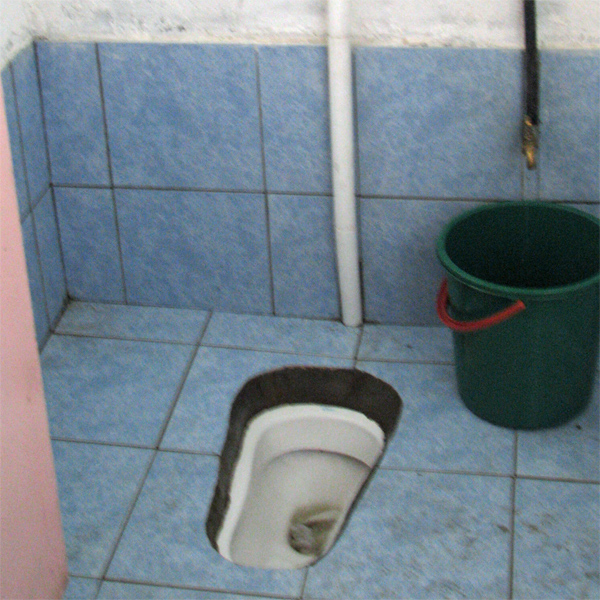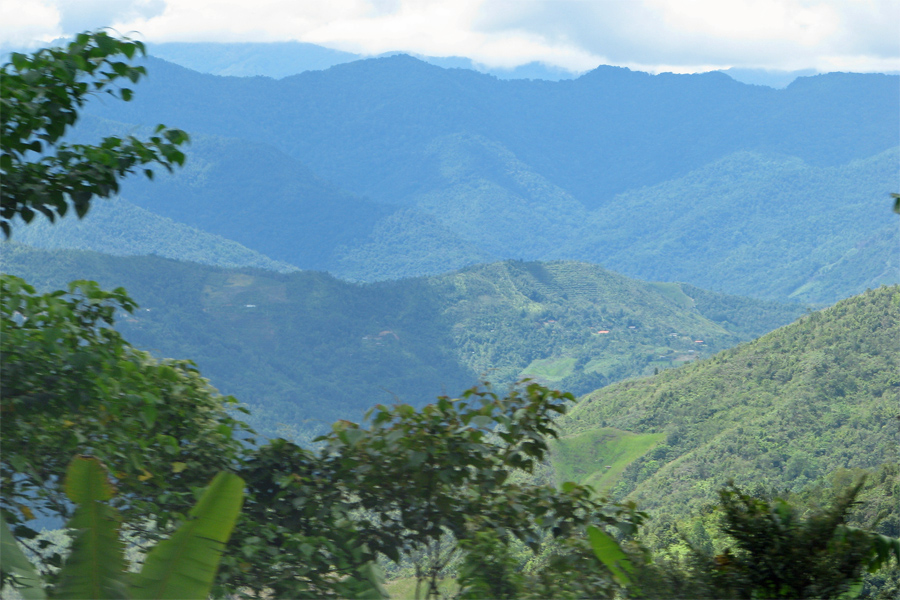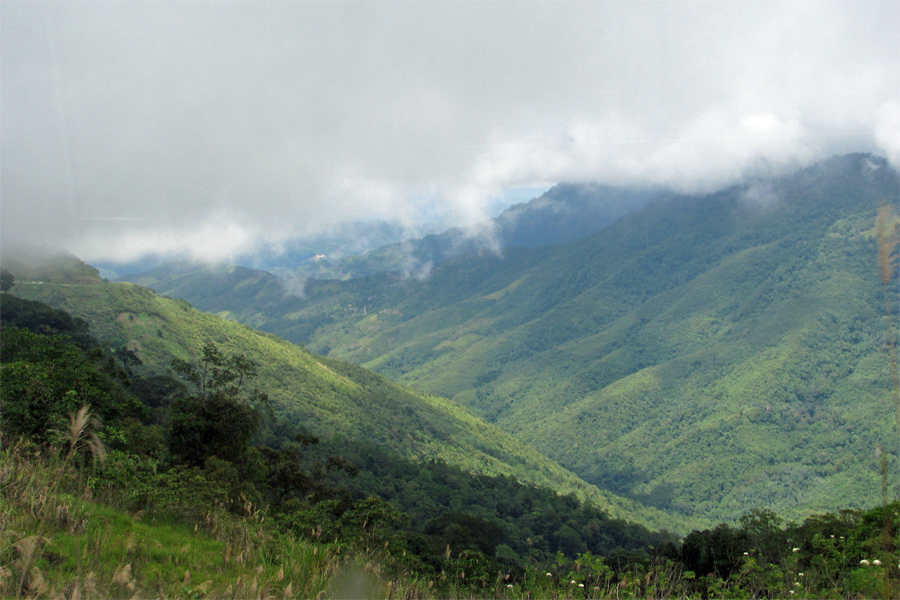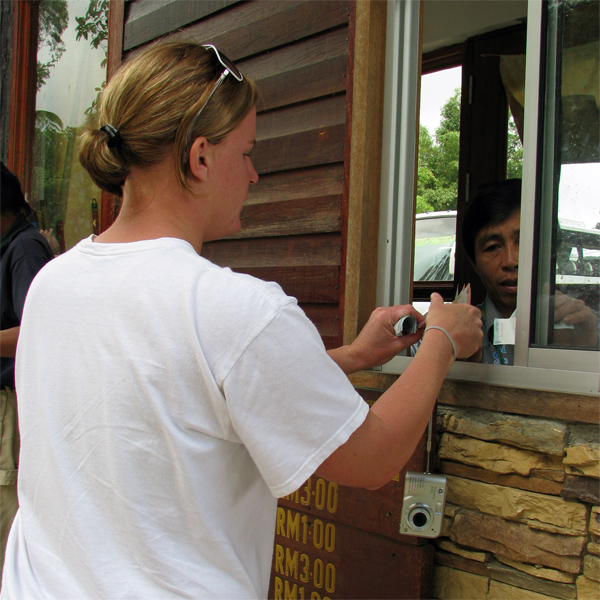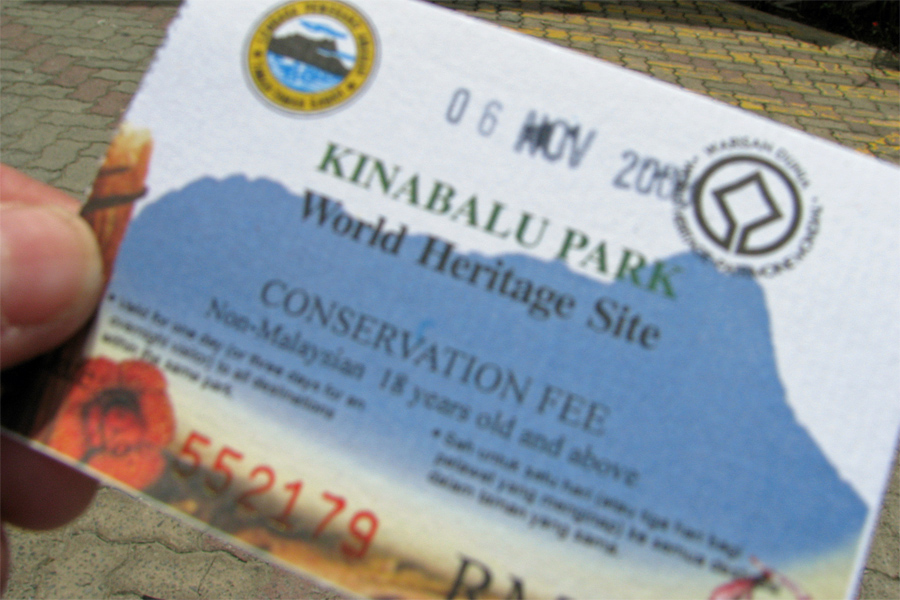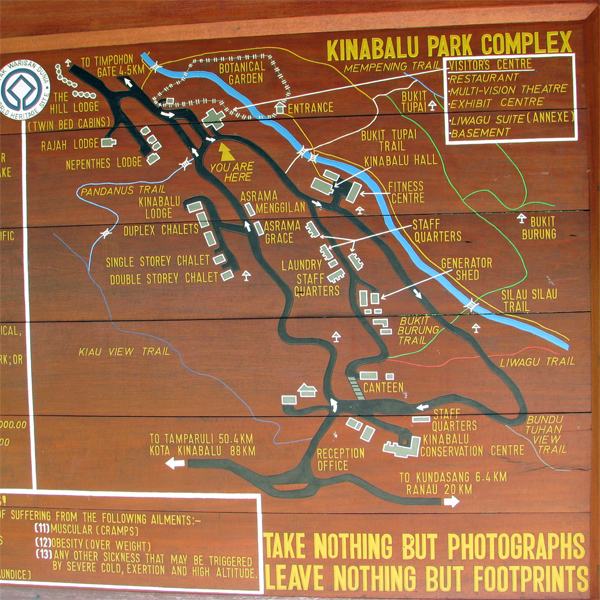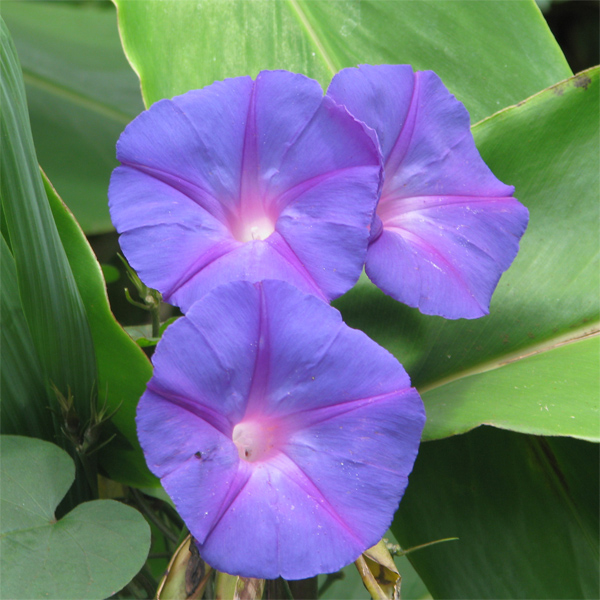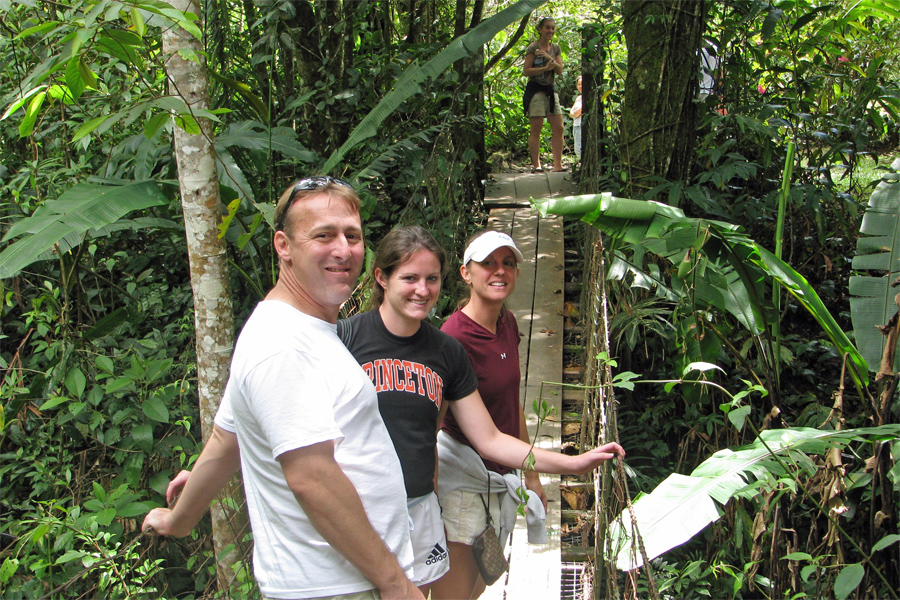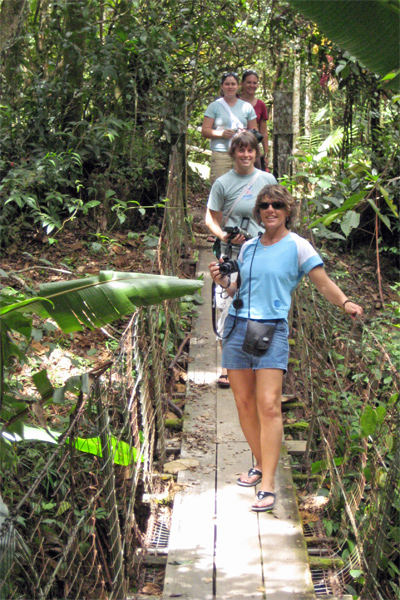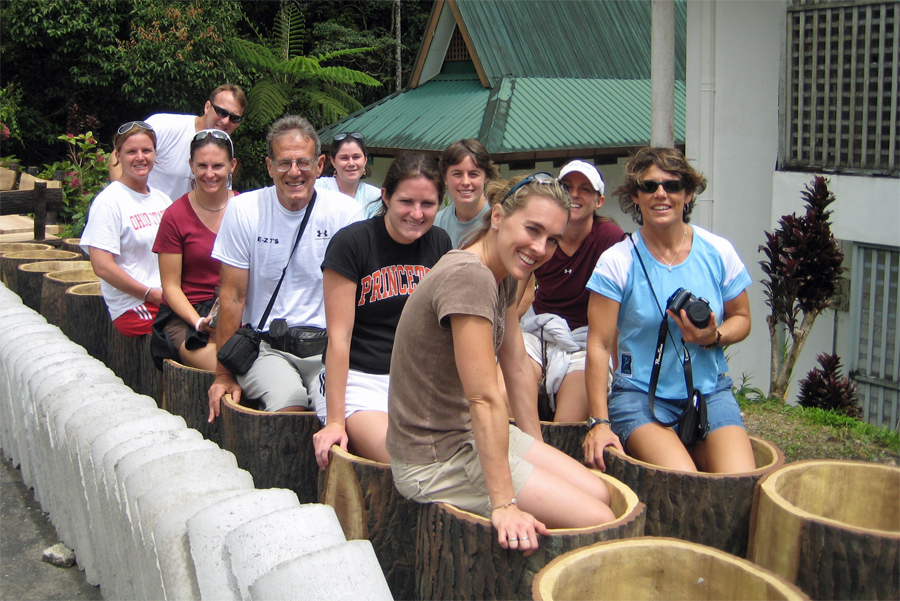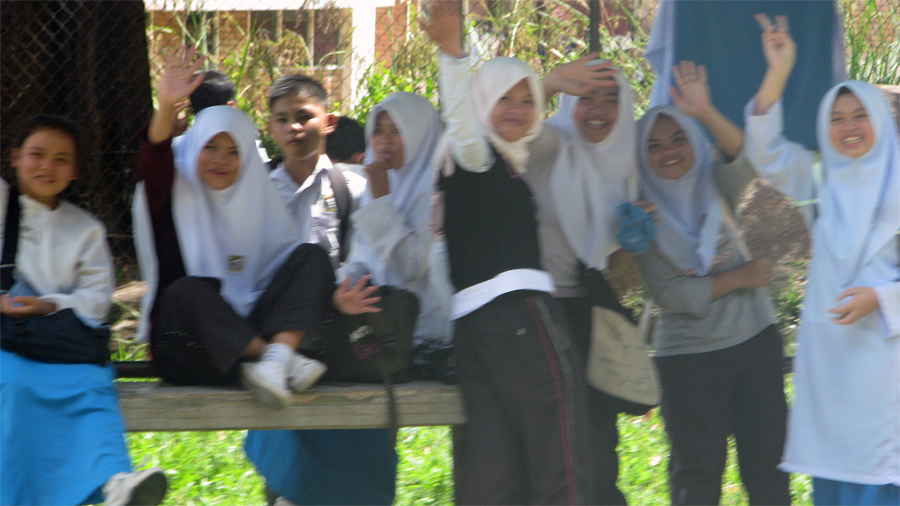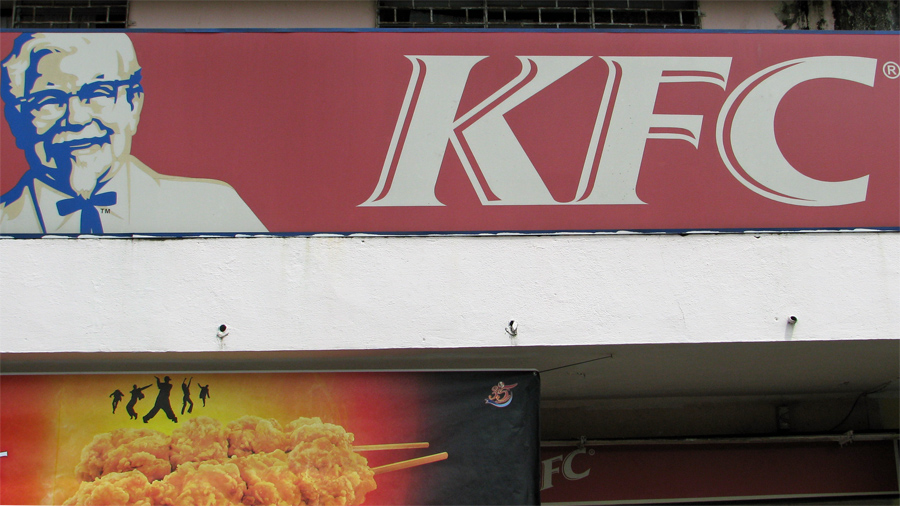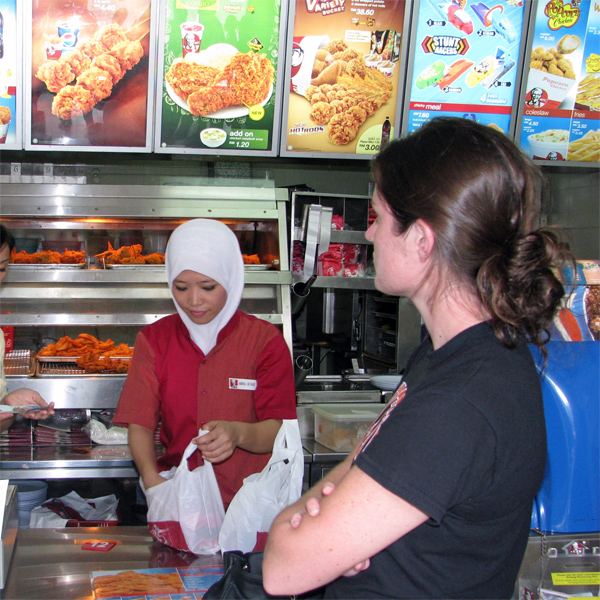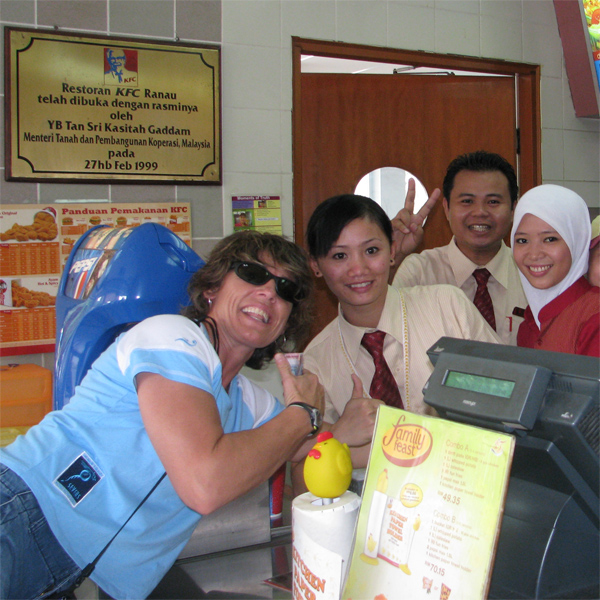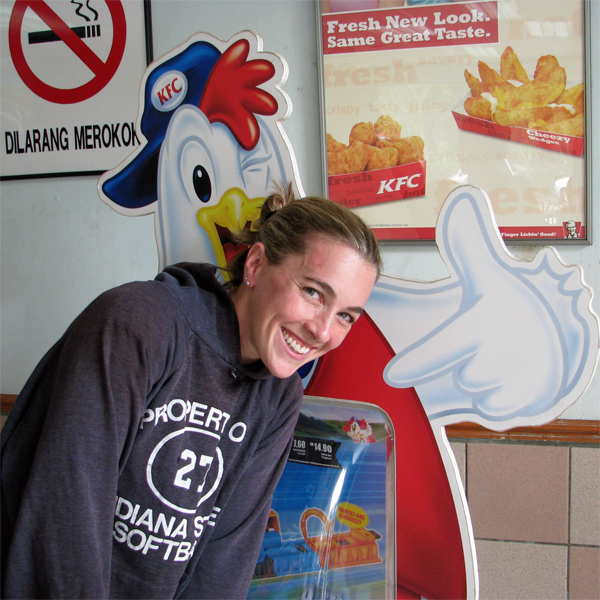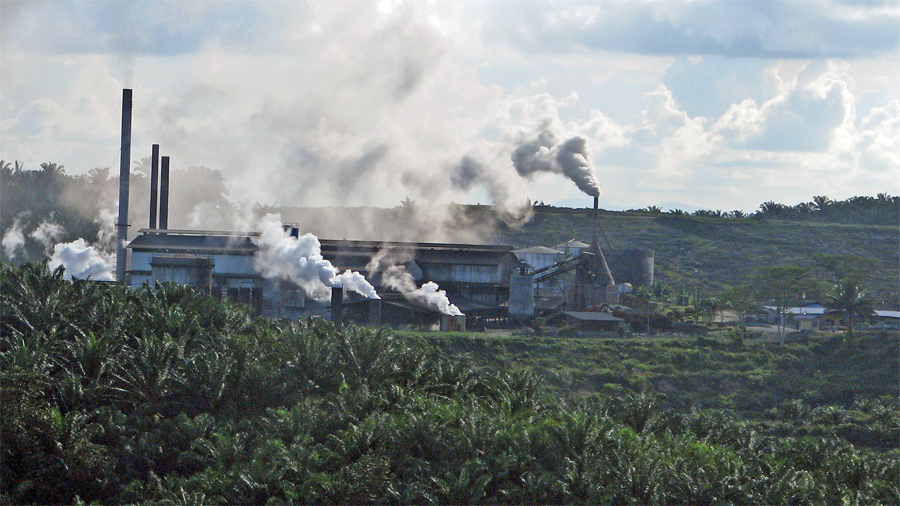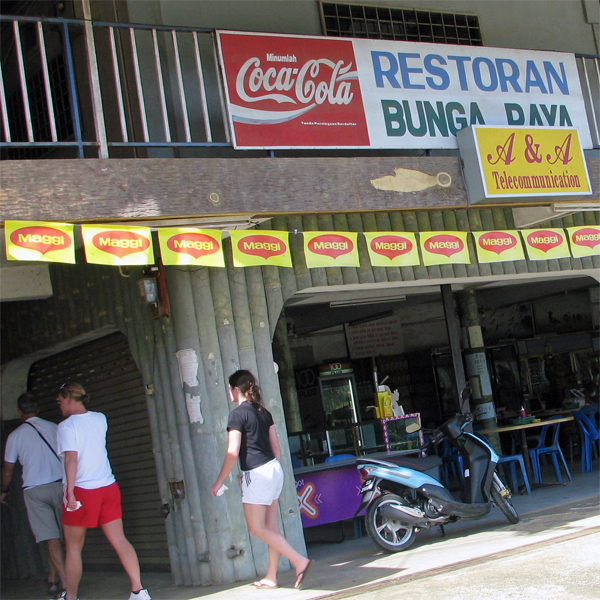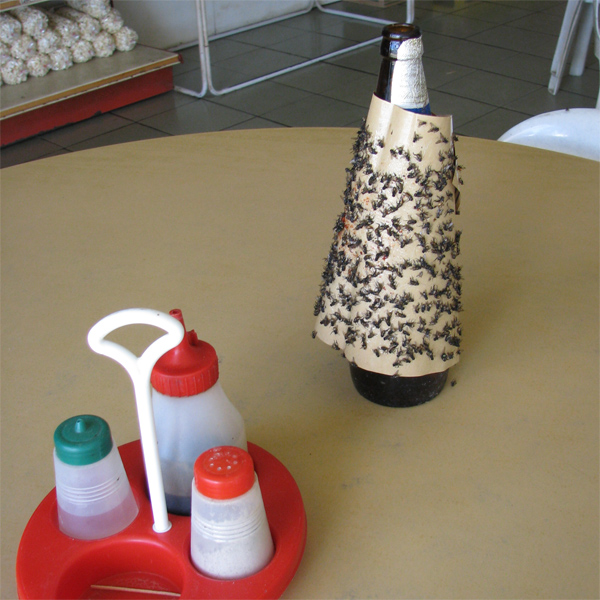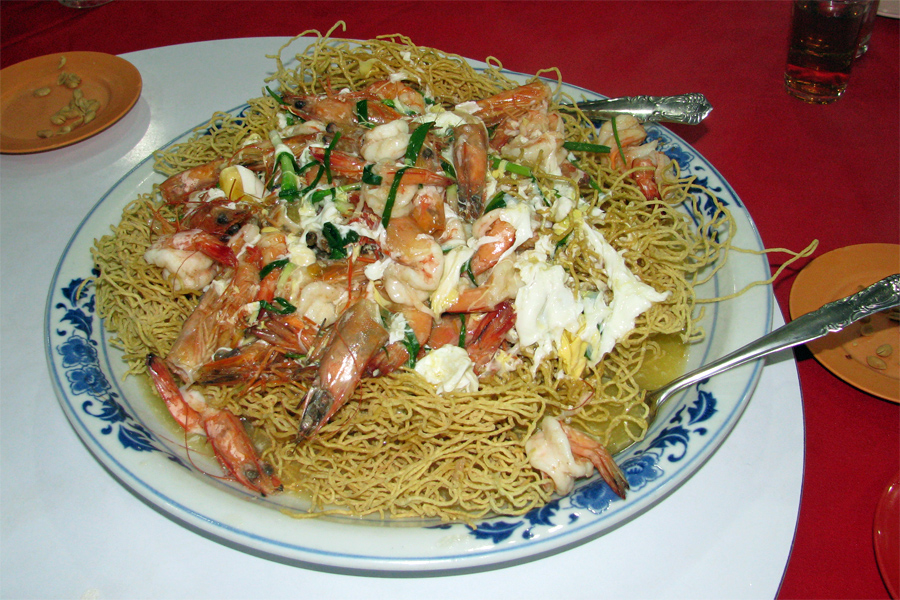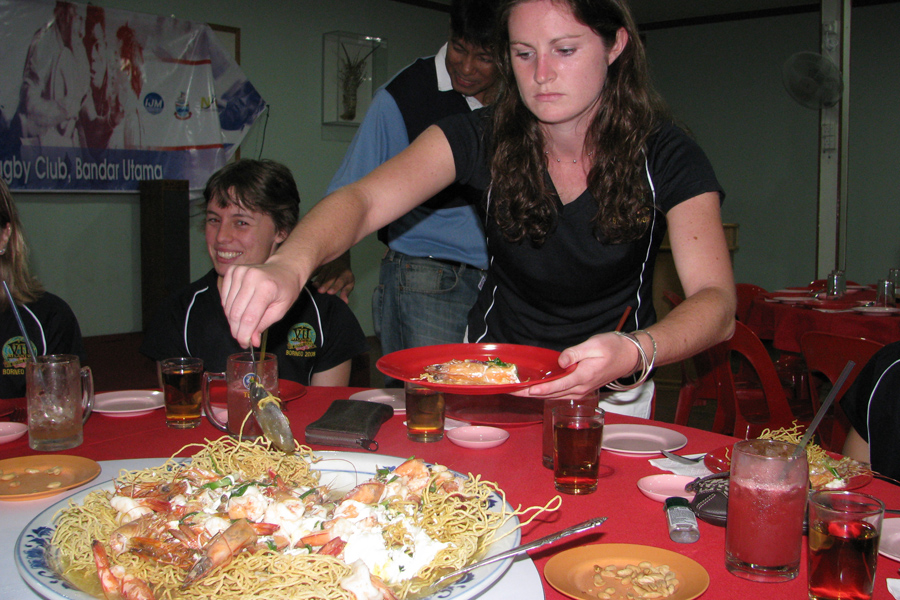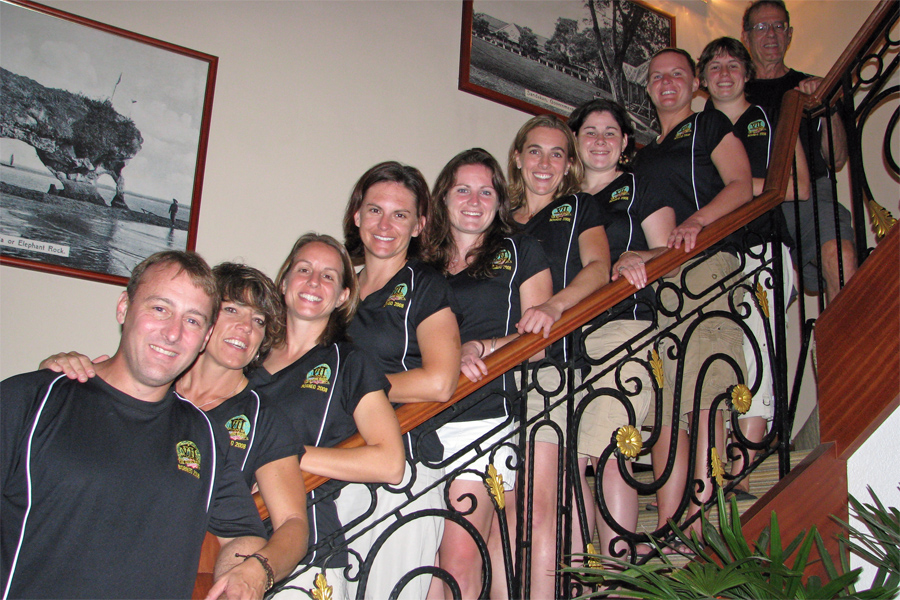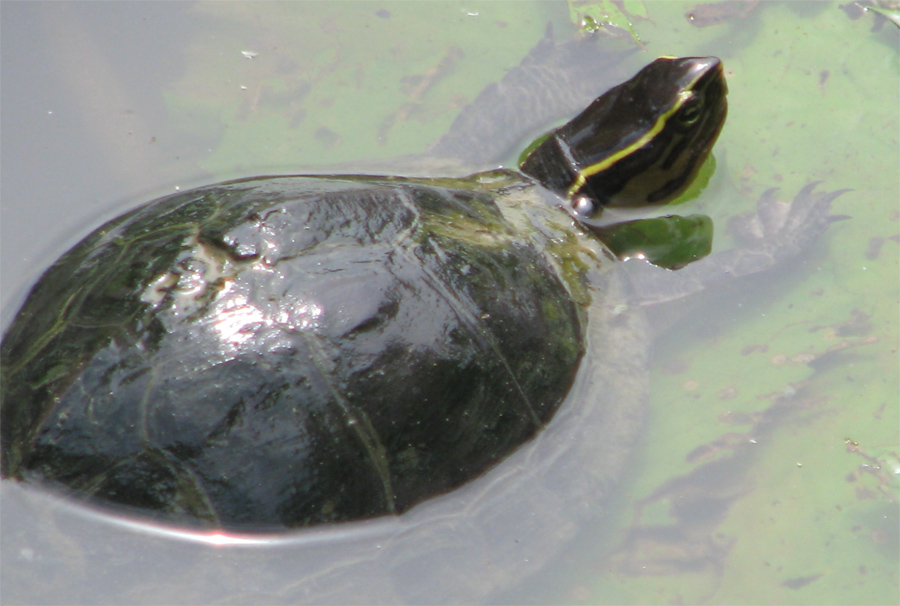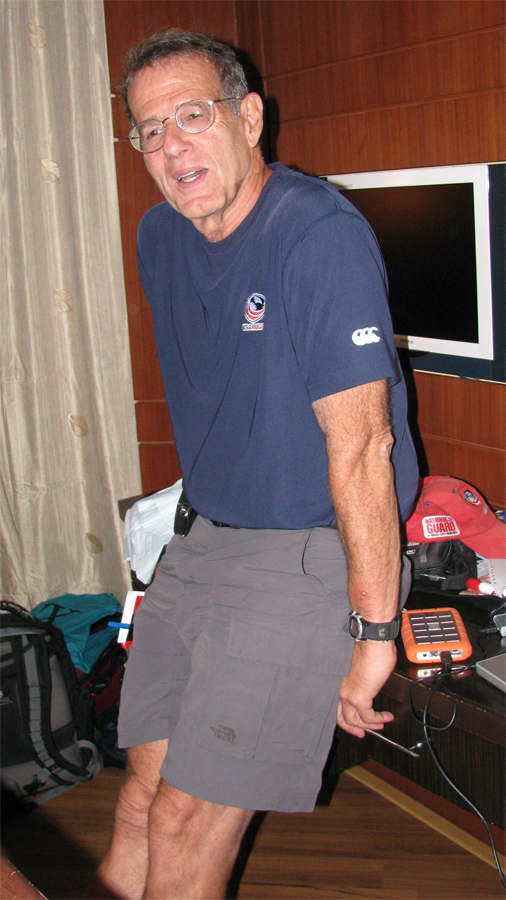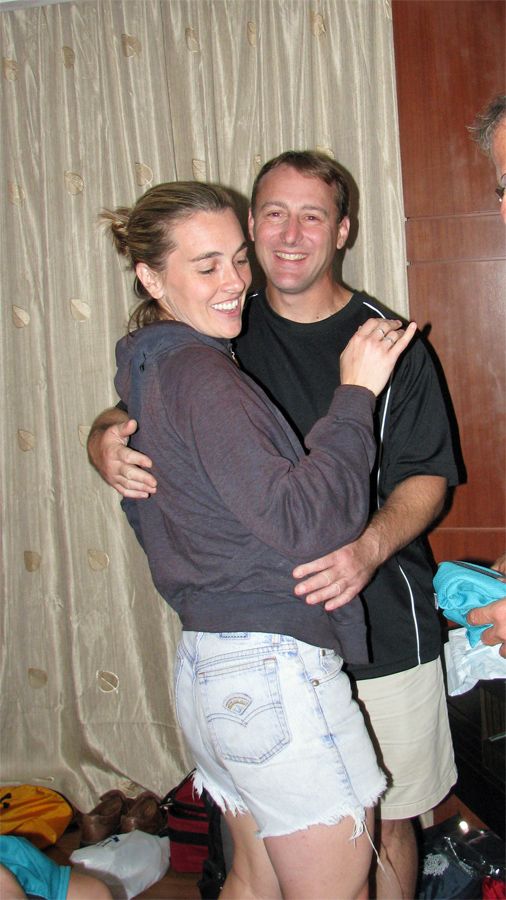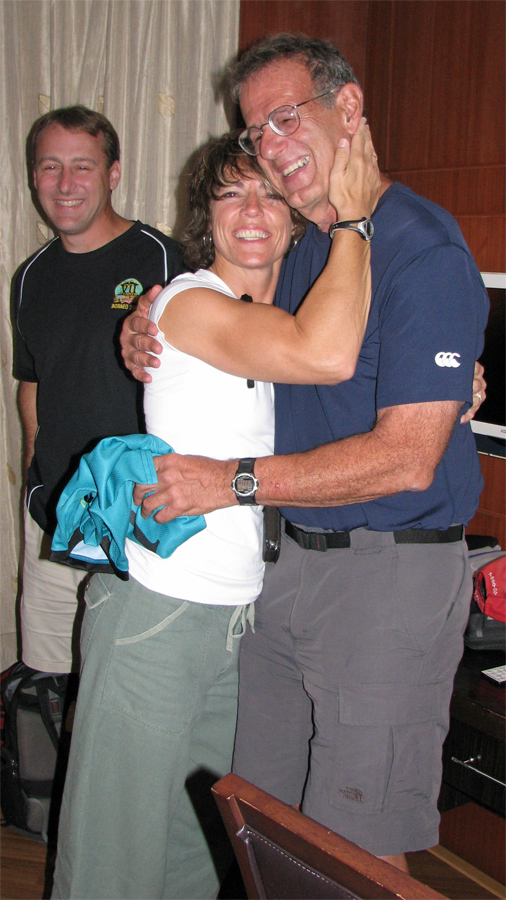The early risers stepped out of our hotel to the
sight of the flags of the nation of Malaysia and the state of
Sabah. We took a little walk and headed back to breakfast.
Then it was off to the Sepilok Orangutan Rehabilitation Centre,
just a few miles outside of town.
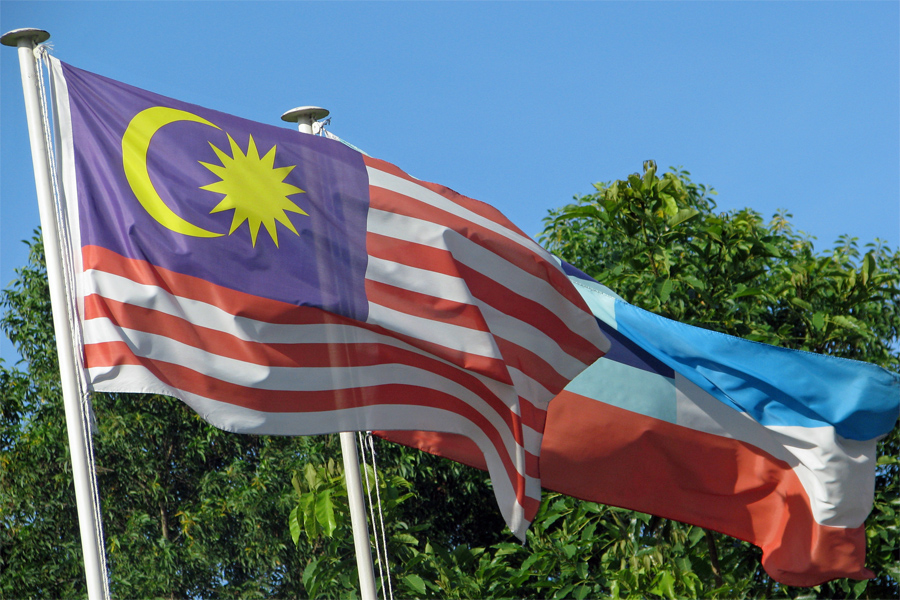 Flags of Malaysia (L) and Sabah (the
easternmost state of Malaysia)
Flags of Malaysia (L) and Sabah (the
easternmost state of Malaysia)
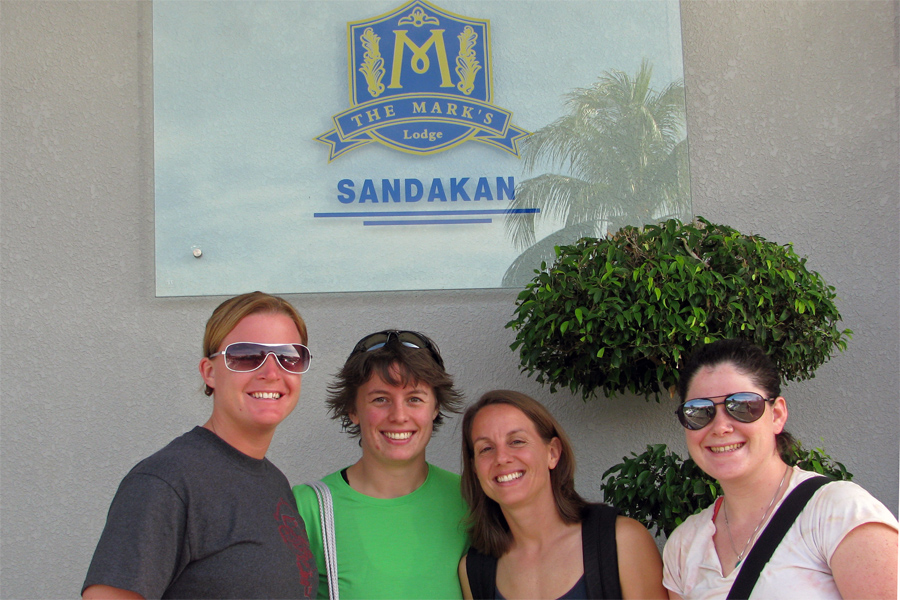
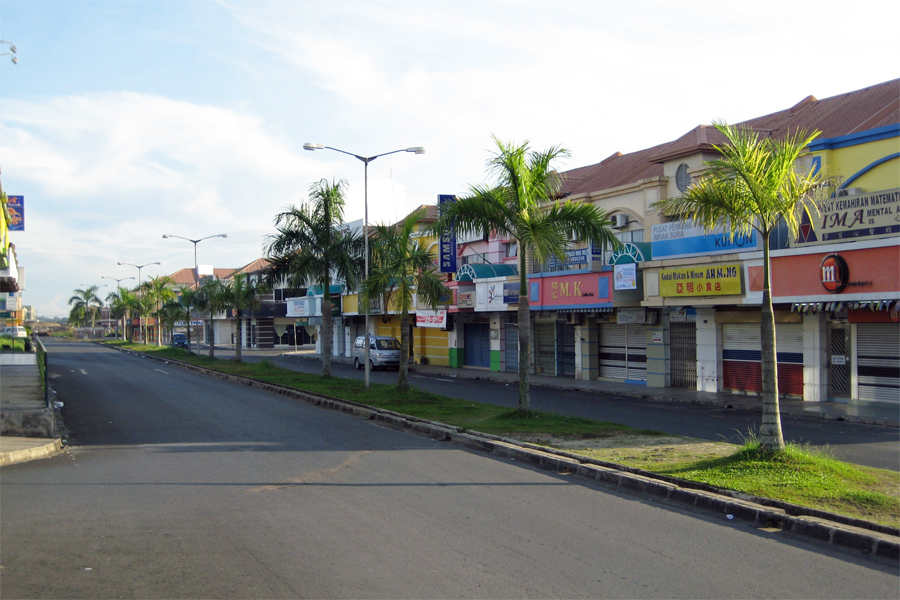 Left: Early risers in front of our hotel
Left: Early risers in front of our hotel
Right: a block away, this business district is pretty
empty at 7 AM
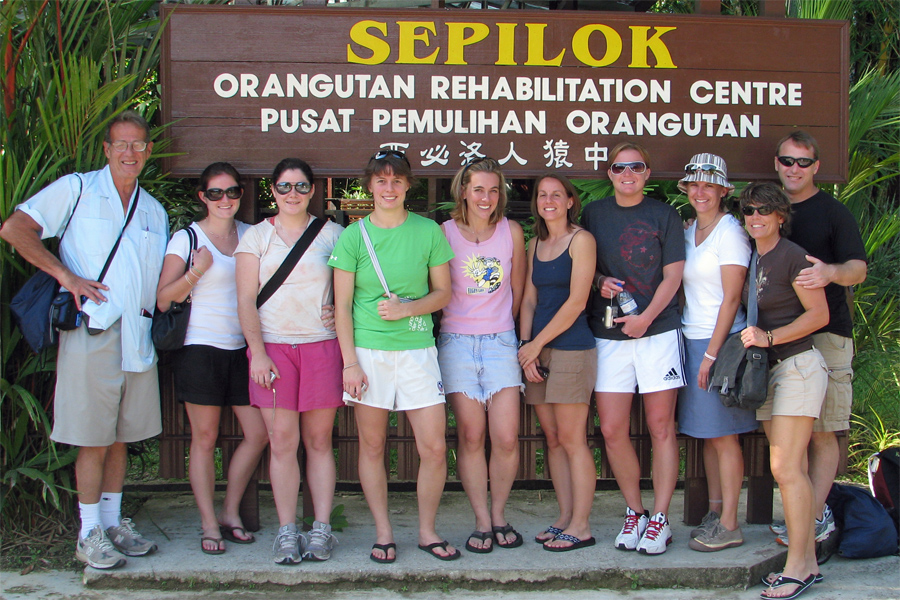
We head in to see the Orangutans
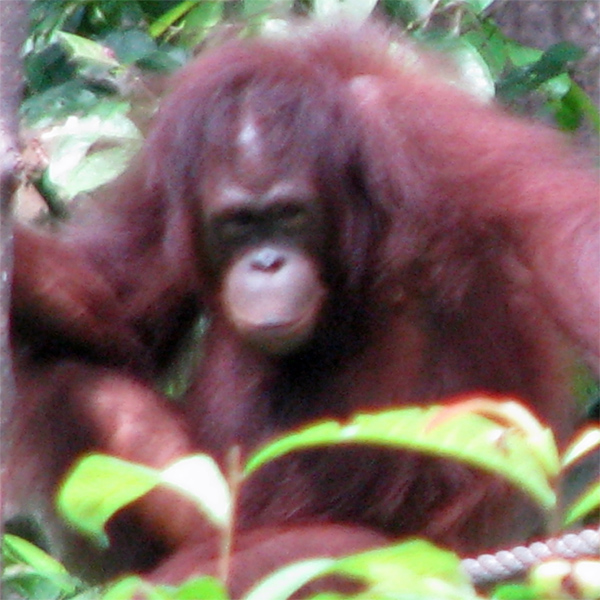
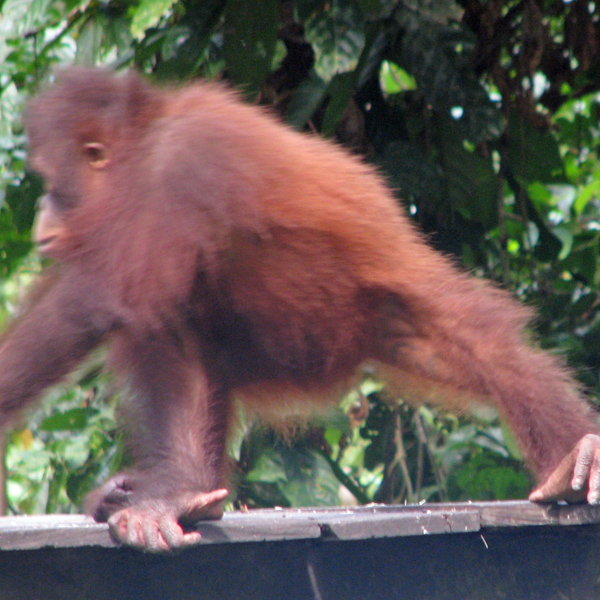
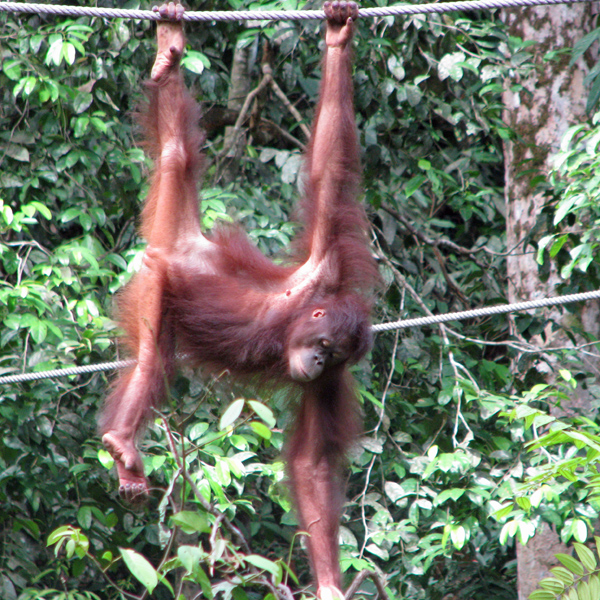
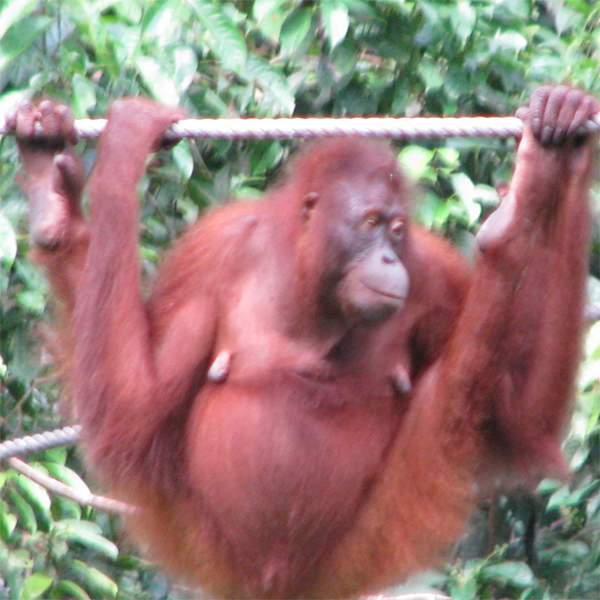 Four typical views of Orangutans passing
their time away at the Rehabilitation Centre.
Four typical views of Orangutans passing
their time away at the Rehabilitation Centre.
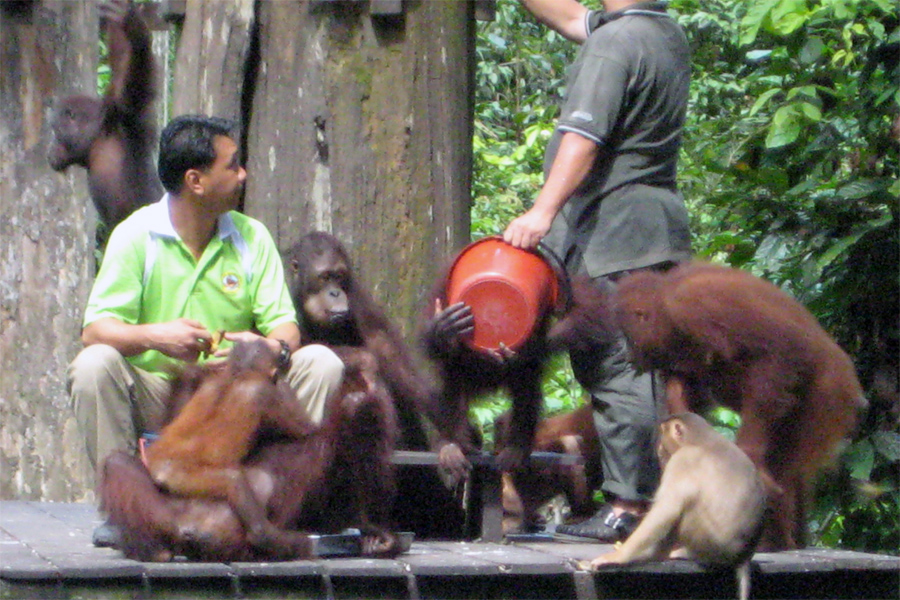
Feeding time for this group of Orangutans. The lone
monkey (lower right) tries to get in on the action as
well.
Click on the picture to
see a few seconds of feeding time
Despite the name of the
sanctuary, there are TONS more monkeys to be seen, and to
interact with, than Orangutans. I believe they are all
proboscis monkeys. It was very interesting to "hang out"
with them during our visit. Here are a few pictures
of monkeys on their own, then with us.
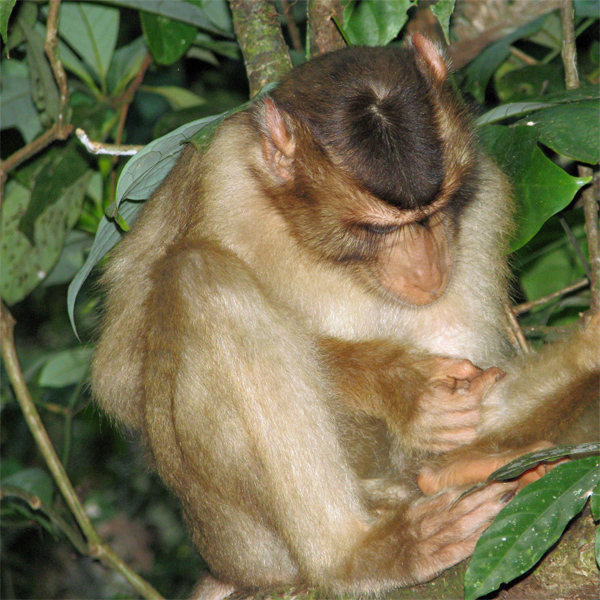
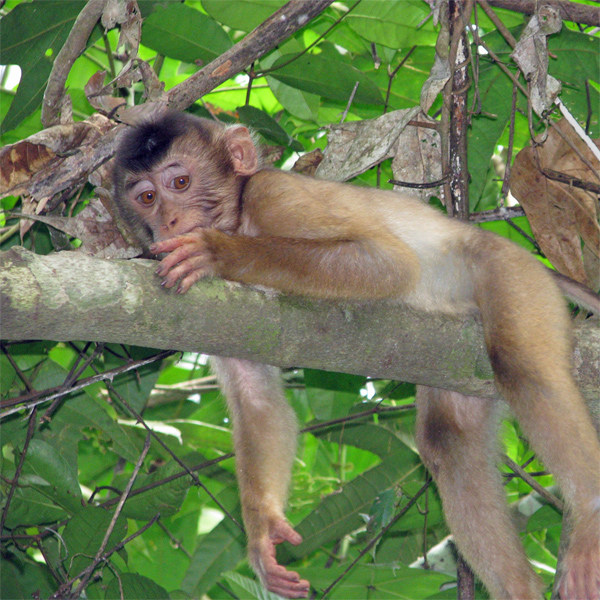
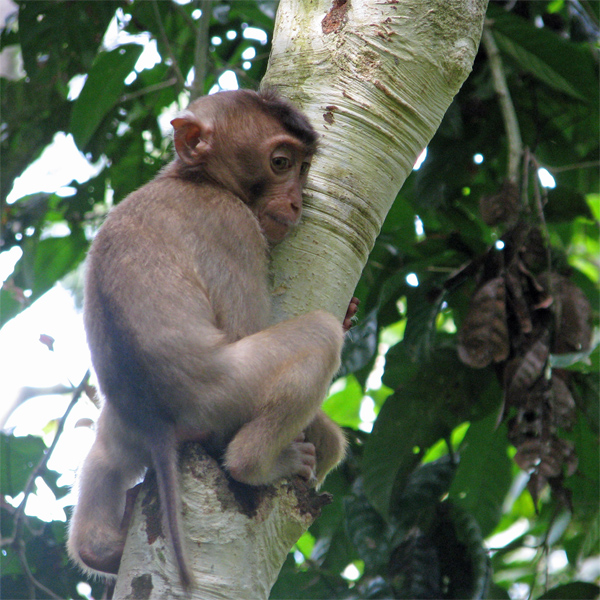
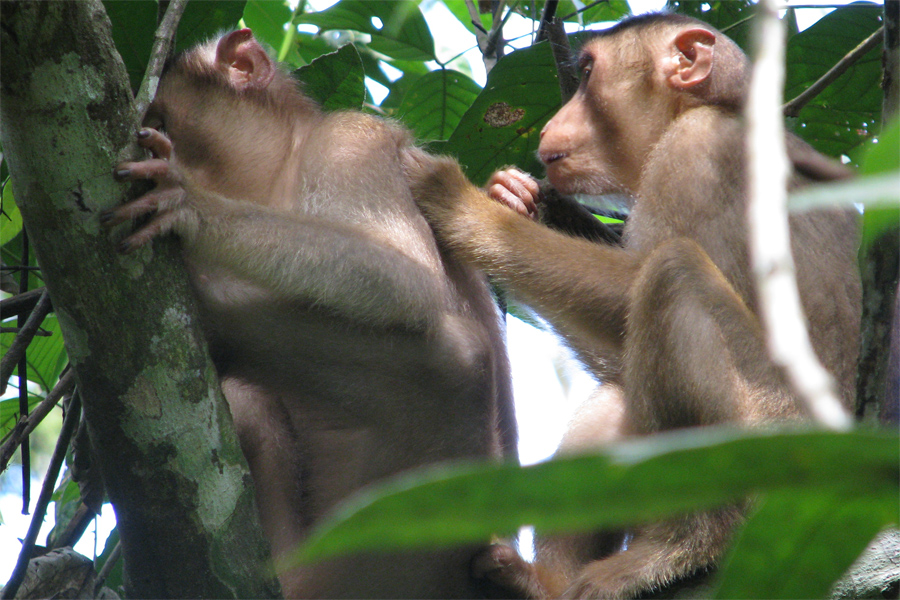

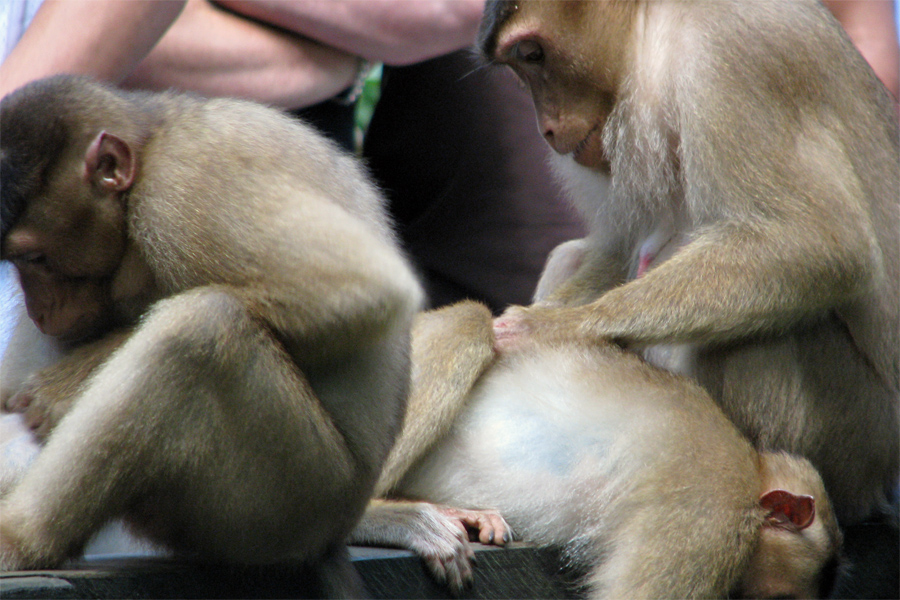
A few typical views of monkeys all around us, doing
what they do
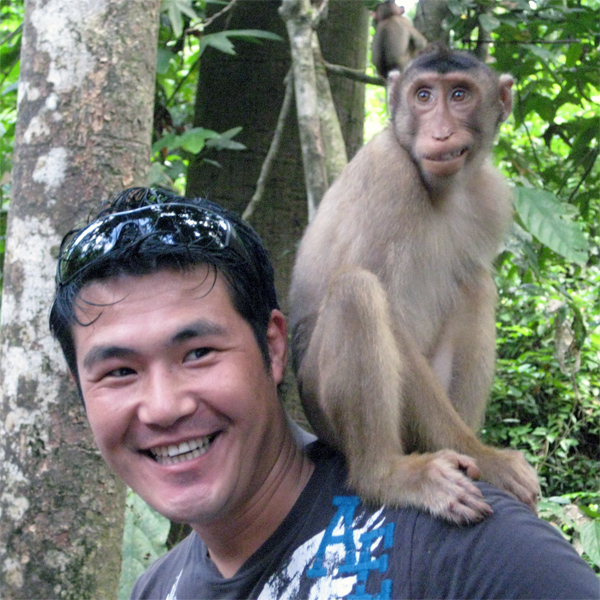
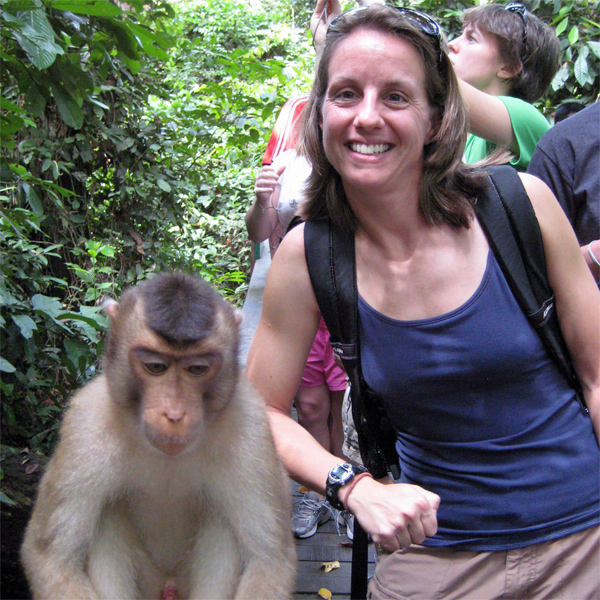
Left: Taizo Hirabayashi, one of the top sevens
referees in the world, has a friend
Right: Tracy with her monkey friend
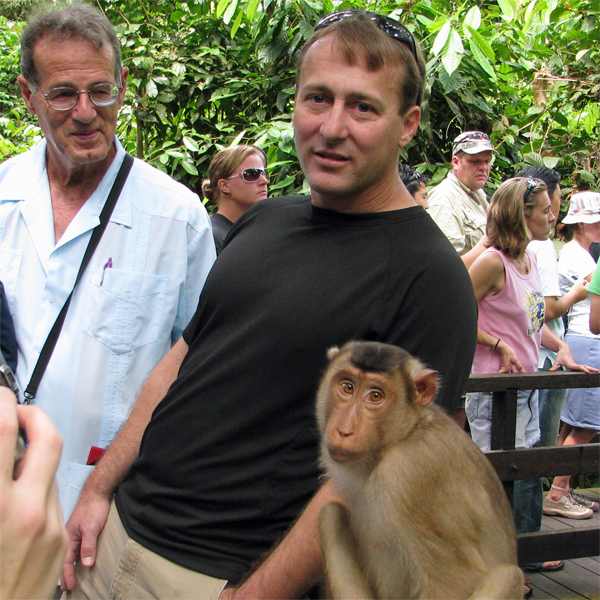
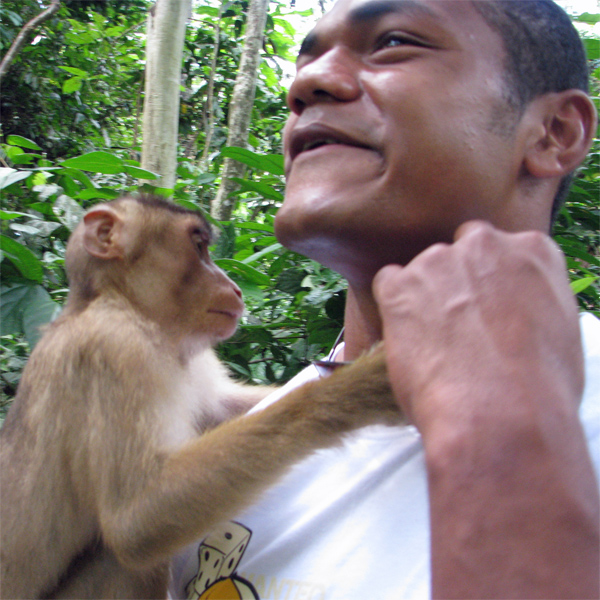
Left: Mike befriends monkey // Right: Fijian rugby player
has apparently asked this monkey to dance!
When I tried to join the happy
interaction between people and monkeys,
however, I was rebuffed by whom I believed to be my
simian friend. A
couple tenths of a second after Tracy snapped the picture,
the monkey's left hand was across my face.
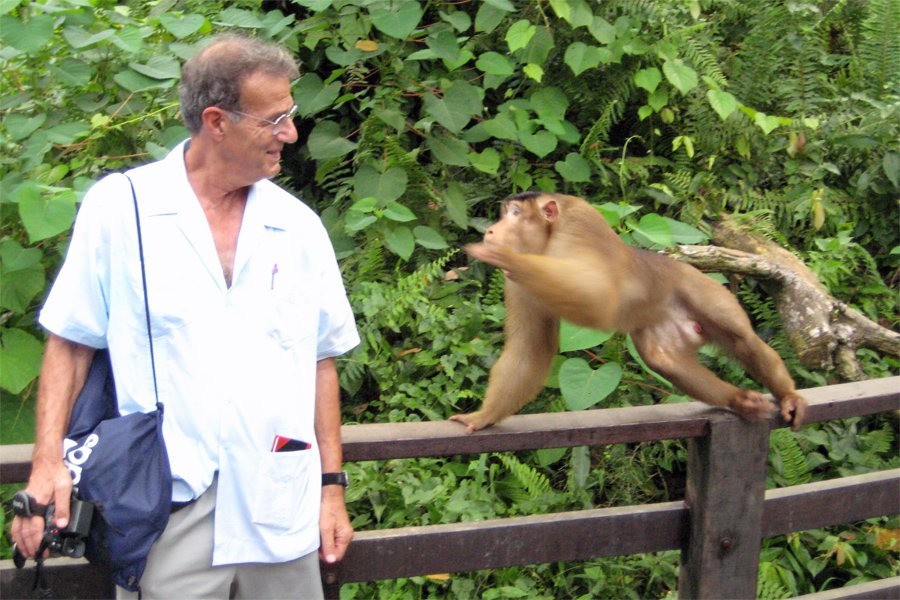
The picture that gave many friends much
amusement. It ended up online in more than one
place :)
I asked Tracy to take a picture of me with the
monkey, who then reached out and smacked me!
Following the visit to the
Orangutan sanctuary, we headed to the Sandakan Memorial
Park, built to commemorate the fate, and trials, of POWs -
mostly Australian - captured during World War II and
forced to walk in what was virtually a death march from
Sanadakan to Ranau.
(From http://www.awm.gov.au/exhibitions/stolenyears/ww2/japan/sandakan/
- "By late 1944, with Allied forces advancing toward
Borneo, the Japanese decided to send about 2,000
Australian and British prisoners westward to Ranau, in
Borneo’s rugged interior. Weak and sick prisoners
staggered for about 260 kilometres along jungle tracks.
Many died on the way, their bodies never recovered. Those
unable to continue were killed; those too weak to march
had been left behind in Sandakan, where all died or were
killed. Only six – all Australians – out of about a
thousand sent to Ranau survived the war." )
And the only thing we had known about Ranau was that it
had a KFC.
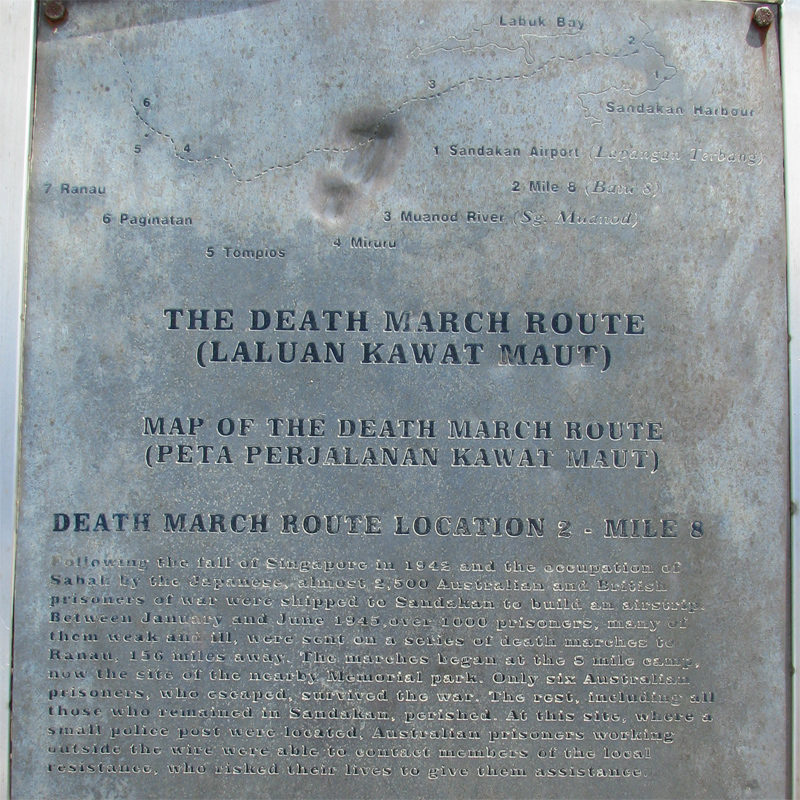
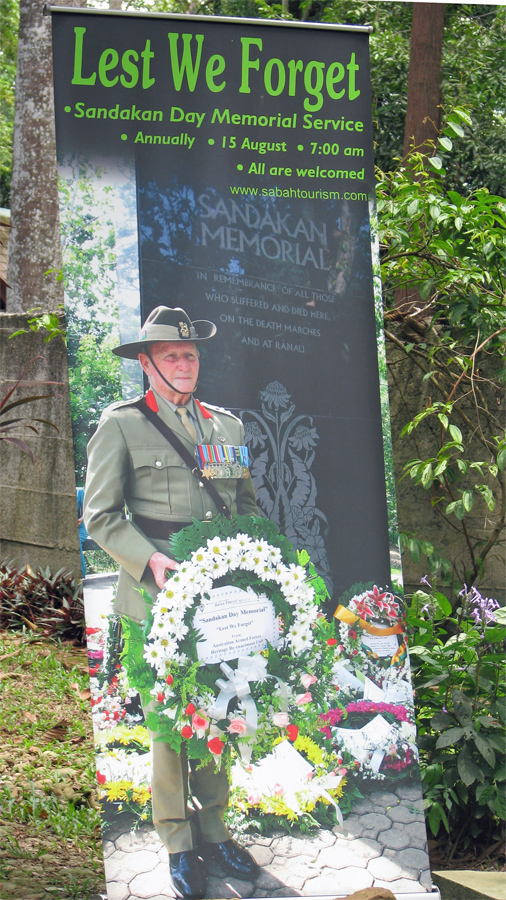 Two markers from the Sandakan Memorial
Park. L: the Death March Route. R: There is an annual
service to commemorate World War II vets.
Two markers from the Sandakan Memorial
Park. L: the Death March Route. R: There is an annual
service to commemorate World War II vets.
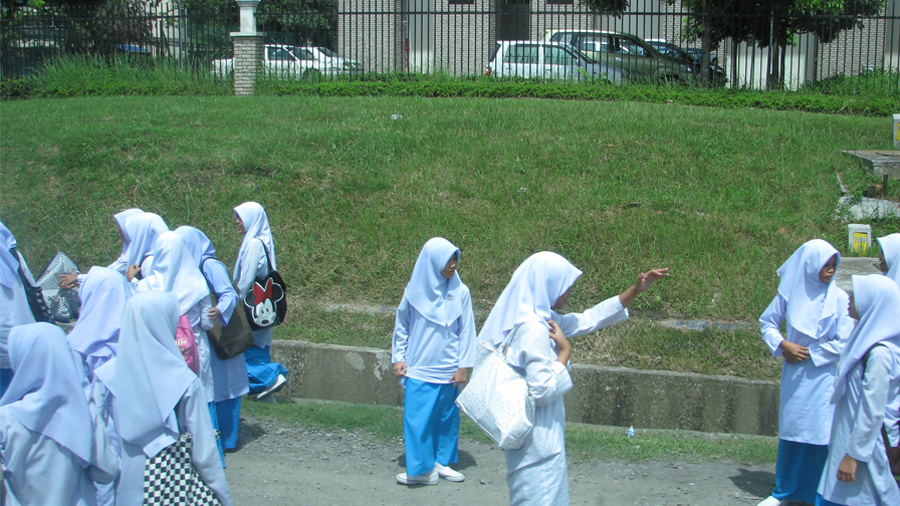
Girls on their way from school. Note the Minnie Mouse
bookbag.
